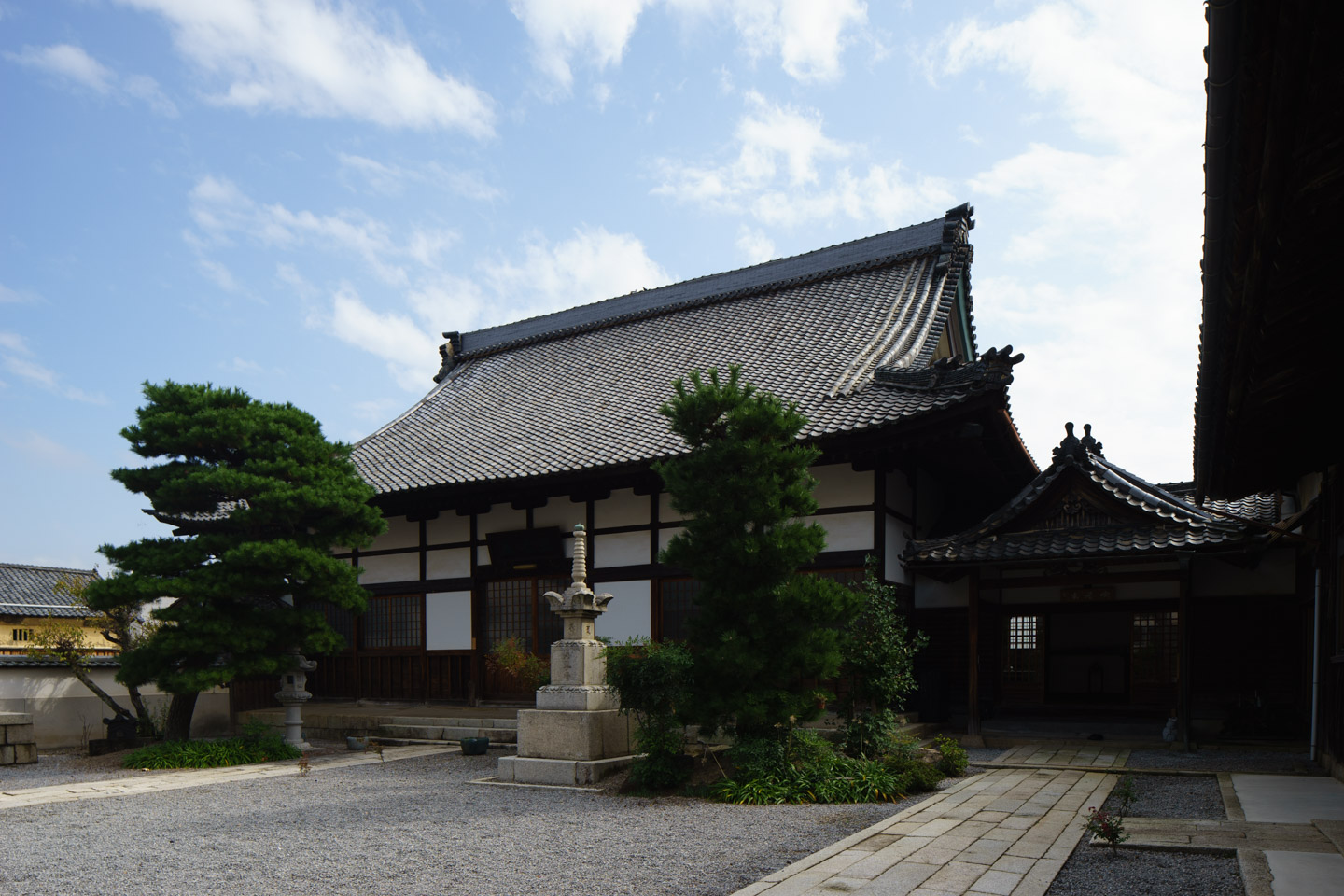Chōshō-in Temple
Chōshō-in Temple
A friendly Zen temple associated with Ii Naomasa in Hikone
place Area: Hikone
access_time Published: 2020.02.21
Name in Japanese: 長松院
Pronunciation: Mannenzan Chōshō-in
Chōshō-in is a temple of the Sōtō Zen sect located in the centre of Hikone. The principal image is of Shaka Nyorai (Shakyamuni Buddha).
In 1602, Ii Naomasa, the first lord of the Hikone Domain, died of tetanus from the injuries he received at the Battle of Sekigahara. His will called for his cremation on the delta of the Seri River in Hikone. The temple built on that site is Chōshō-in. In the Edo period, the meandering Seri River was straightened and diverted, and its new bank formed one of the defences of the Ii family’s new Hikone Castle. Consequently, the site of Naomasa’s cremation is no longer on the river.
According to legend, when Ii Naomasa died on February 1, 1602 at age 42, he was cremated and his remains were buried on a sandbank in the Seri River, where a mound and a hermitage were built. Three guardians were appointed to oversee it. On March 8 that year, a renowned Zen priest from Kai Province, today’s Yamanashi, founded a temple there. In June, Naomasa’s son Naotsugu built a Zen hall there and named it Shōjuin, after the posthumous Buddhist name of Naomasa. Later, its name was changed to Chōshō-in. The characters used in the name of the temple honour Tokugawa Ieyasu and Ii Naomasa.
Most of the temple buildings were burnt down in two large fires in 1720 and 1817, but it was restored with the cooperation of temple supporters.
The principal image is of Shakyamuni Buddha, the original Buddha. In the precincts are statues of Jizō bodhisattva, the guardian deity of children, and the fiery god Sanjakubō Akiha Gongen. In the main hall, statues of the Sixteen Arhats, Shō Kannon, and Monju are enshrined, with other valuable works. Among these is a statue of Amida Nyorai with one thousand bodies, which is ordinarily withheld from public view. It was donated in 1718 by Hachisuka Muneteru, the seventh lord of the Tokushima Domain, with a hundred gold coins for repairing the Amida Hall. Temple tradition holds that it was a donation to succour the spirit of Muneteru’s foster daughter, Tomohime.
In addition to items donated by the vassals of the Ii clan, there are many from wealthy merchants and townspeople.
In the entrance to the main hall is a vermilion‐lacquered palanquin used when the priest visited the castle. The gate displays a calligraphic plaque by Gesshū Sōko, the priest considered responsible for the resurgence of the Sōtō sect. The lecture hall displays a calligraphic plaque by the Zen priest Senjo Jitsugan, which is a mark of the high status of the temple.
In the drawing room of the temple hangs a beautiful scroll painting of Ii Naomasa in the red armour he wore to terrify his enemies. At the entrance of the priest’s quarters are statues of Idaten and Ususama Myōō.
The main hall has 122 tatami mats, and it’s renowned as one of the largest lecture halls in Shiga Prefecture. In the main hall, there are mortuary tablets of Ii Naomasa and the other main clan personages such as Naosuke and Naonaka. A particularly unusual and distinctive feature is a tall, rotating cabinet containing hand-copied Buddhist texts donated by a parishioner in 1924. The cabinet can be rotated, and it’s said that if you rotate the cabinet once, you acquire the wisdom contained in all of the books.
The temple has numerous items of historical value including a monument to Naomasa’s cremation, the tomb of the branch of the Miura family who rushed by horse to Tokugawa Ieyasu to report the death of Naomasa, and the tomb of Hiraishi Kuheiji Tokimitsu who invented a kind of bicycle.
The current priest, Kiyo Tezuka, opens the temple for Zen practice and various social and educational activities.
Location
place 4-29 Chūochō, Hikone, Shiga Prefecture , Shiga prefecture

